Honda has been making performance cars for a very long time now. While they’ve worn a variety of different badges throughout the years, none of them are quite as well-known and established as the Type R.
The Type R moniker got its start in the early 90s with the NSX Type R, which is still one of the most sought-after supercars.
Eventually, it trickled down to the Integra, and then to what would arguably become its most famous application, the Civic.

In 1997, Honda released the EK9 Civic Type R — the genre-defining hot hatchback is still going strong today.
Ten years later in 2007, Honda paired the Type R’s performance with the futuristic, triangle-centric shell of the 8th-gen Civic, creating the FN2 Civic Type R.
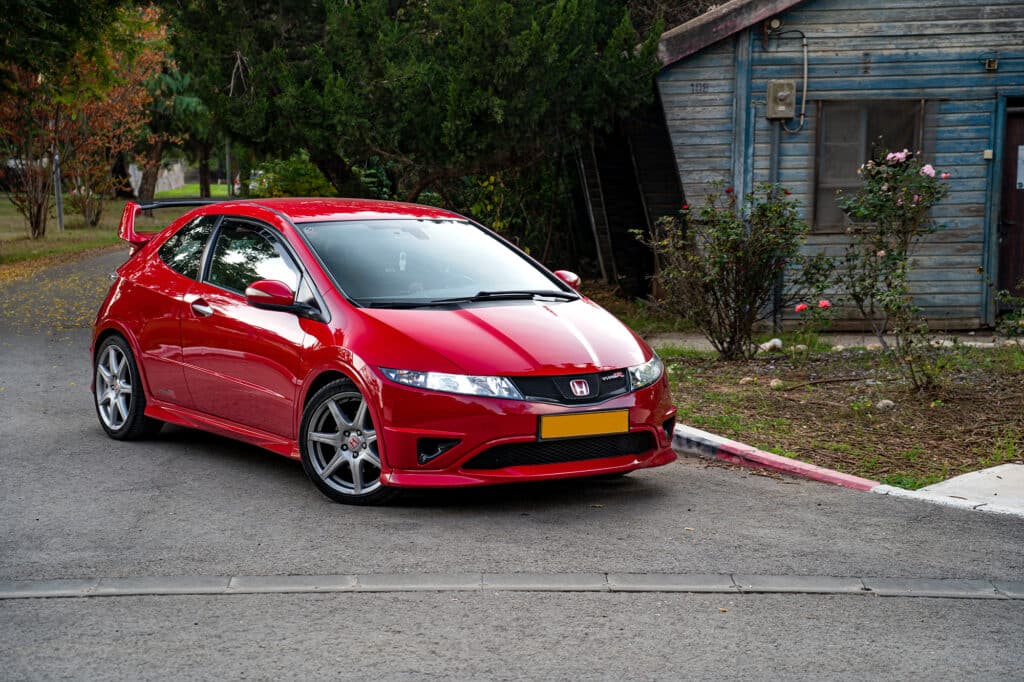
While that’s the Civic Type R most of the world enjoyed from 2007 to 2011, there was also a sedan version developed specifically for the Japanese market, and it’s certainly one of the last true legendary JDM cars.
In this article, we’ll review the JDM-exclusive FD2 Honda Civic Type R.
FD2 Civic Type R: Production and Positioning
The 8th-generation Civic had its debut in 2007, and that’s when Honda decided to split the two body styles for different markets when it came time to develop the Type R.
While a lot of markets did also get the sedan version of the 8th-gen Civic, only Japan (and Malaysia) got the sedan version which bore the FD2 chassis code.
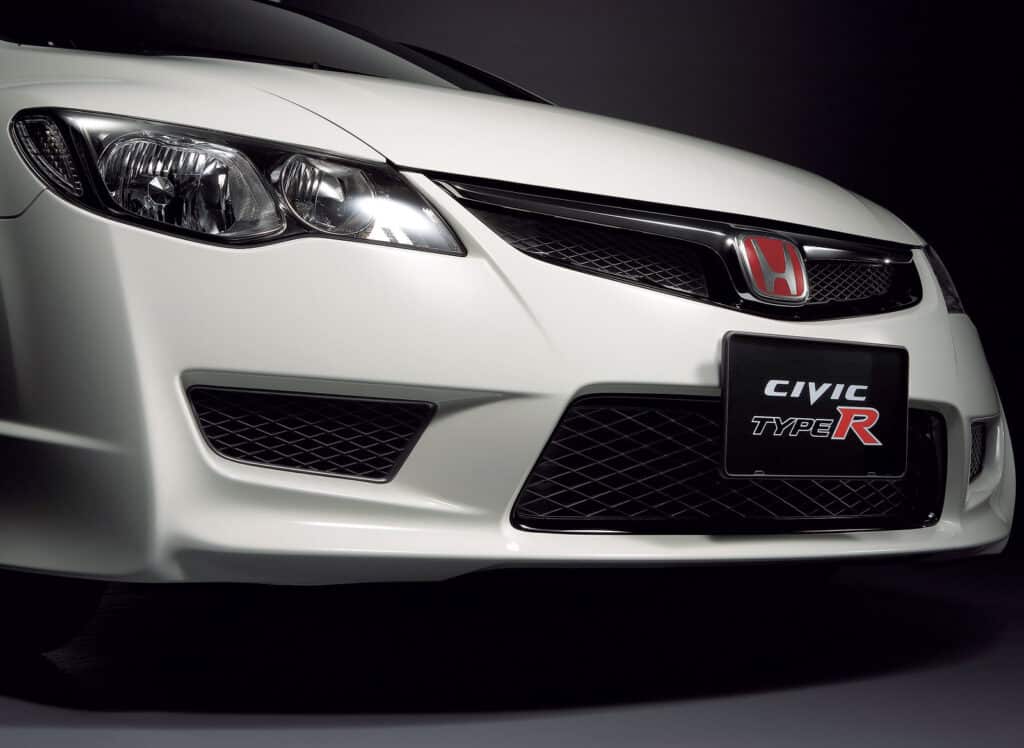
The differences between the FD2R and the global FN2 Civic Type R don’t just stop at the aesthetics. The powertrain on both cars is similar, but the drivetrain components and chassis construction are very different.
In Japan, the FD2 Type R sat at the top of the Civic lineup, and it’s still highly sought after to this day. One of the main reasons for that is the FN2 Type R was a bit soggy behind the wheel, but the FD2 corrected all of those problems.

While the FN2 Civic Type R was built at Honda’s facility in Swindon in the UK, right alongside the regular Civic and the CR-V of the same time, the FD2 was built in Honda’s Suzuka facility in Japan.
Production started in 2007 and ended in 2011. In 2015, the FK2 Civic Type R was finally released, and it reverted to a hatchback body style for all global markets.

When the FD2 Civic Type R first went on sale in 2007, it started at just over 3.7 million yen, or about $25,000.
Nowadays, $25,000 will net you a decent used example if you can find one, and some pristine examples are fetching closer to $50,000. Why are people charging so much money for what is, at the end of the day, a decade-old Honda sedan?
Well, it’s not just a decade-old Honda sedan. The Civic FD2 Type R is one of the most special performance cars to ever come out of Honda. Let’s see why that is.
Specs, Performance, and Handling
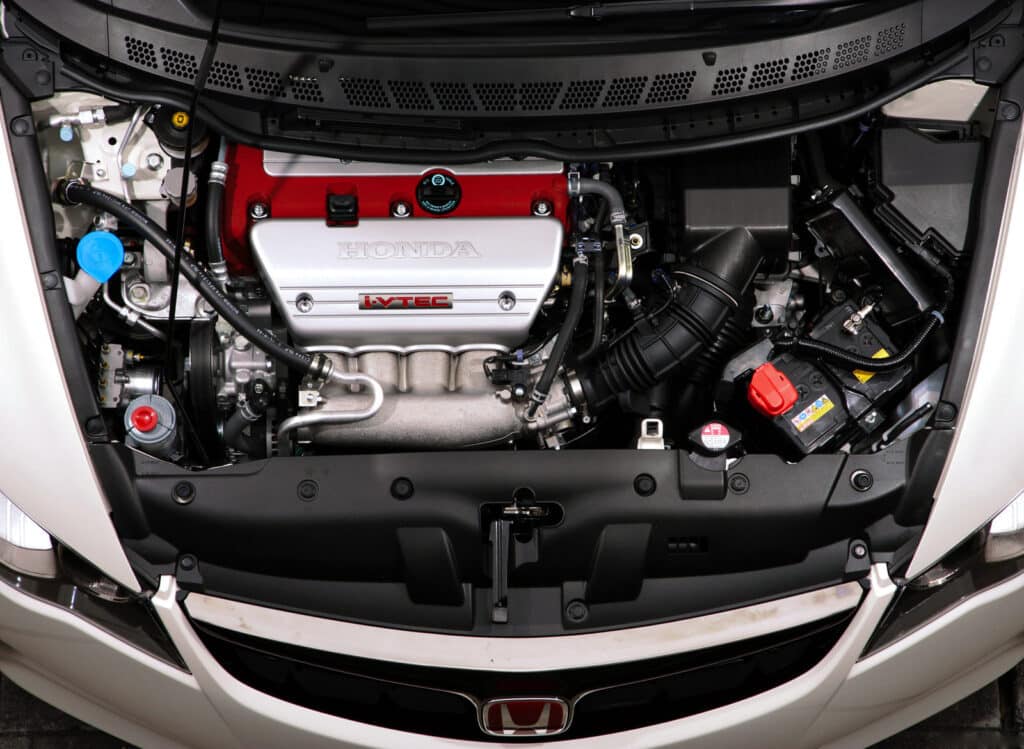
Engine: 2.0L K20A inline-4
Fuel system: Multi-point injection
Power: 222 hp at 8000 rpm
Torque specs: 158 lb-ft at 6100 rpm
Transmission: 6-speed manual
Layout: FF
Production years: 2007-2011
Curb weight: 2,799 lbs
Length: 178.1″ to 179.9″
Wheelbase: 106.3″
0-60: 6 seconds
¼ mile time: 14.4 seconds at 99 mph
Under the hood of the FD2 Civic Type R lives the excellent K20 engine, specifically the K20A 2.0-liter naturally-aspirated inline-4.
This is undoubtedly one of the best, if not the best iteration of Honda’s K-Series engines, which debuted in the early 2000s to replace the B18 and B16 engine.
It’s pretty much unanimous that the 20A iteration of the K-Series family is the best Honda engine to build. It only ever appeared in the FD2 Type R and a couple of other high-performance Honda models.
The preceding EP3 Type R used the K20A as well, so Honda adopted the “if it ain’t broke, don’t fix it” mentality. The K20A in the FD2 was also known as the Spec R.

That being said, it did see some exciting changes.
The redline was bumped up to a screaming 8600 rpm; you didn’t have to wring its neck for VTEC to kick in, as the FD2 Type R awakens the signature Honda camshaft timing concerto at 5800 rpm, down from the EP3’s 6000 rpm.
Effectively, there’s reaching peak power in the FD2 Type R is surprisingly easy, and so is staying in the comfortable zone for spirited driving.
Speaking of peak power, that wasn’t just higher than the EP3 Type R, it was also higher than the FN2 Type R that the rest of the world got.

In the FD2 Type R, the K20A put out 222 hp at a deafening 8000 rpm, and 158 lb-ft of torque at 6100 rpm.
That’s around 20 more horsepower than the global Type R, but also not a major weight penalty compared to the equivalent hatchback, so performance was just as good, if not better.
0-60 mph takes 6 seconds, which is half a second quicker than the FN2’s 6.5 seconds. Flat out, the FD2 ekes out 3 mph over the FN2, for a top speed of 149 mph.
For the time, and even today, these are some pretty excellent figures for a 4-door sedan. They don’t tell the full story, however. The engine in the FD2 Civic Type R is one of the car’s most characteristic aspects.

Thanks to the total lack of forced induction, and the incredibly high redline, the engine pretty much forces you to rev it out to get the most out of it.
It rewards you with the iconic Honda soundtrack, made possible thanks to the dual overhead camshaft design of the K20, and the pronounced roar when VTEC kicks in around the middle of the range.
On the other hand, if you want the FD2R Civic to feel the absolute best that it can, you pretty much have to keep the engine above 6000 rpm.

This can be a little tiring, but it’s well worth it. Being an NA engine, it never really loses power in the true sense of the word.
However, dip below the VTEC range and you will notice the strain, which will inevitably force you to drop a gear or two on the six-speed stick to get it back up again.
The 6-speed manual transmission was the only available option, with no automatic in sight.

The 6-speed in the FD2 sends all 222 horses to the front wheels. This was before the time when AWD JDM cars were all the rage.
There’s another element to the powertrain and the driving experience of the FD2, and that’s the electronic throttle control.
If you’re not used to it, there’s a bit of a learning curve when driving the Type R. However, it’s been a well-known fact that ETC is an excellent system for years now.
It allows for better throttle control and much more nuanced inputs, which is an important aspect when you do the sort of driving the FD2 Type R encourages you to do.
Drivetrain Details
Honda hooked up the FD2R with an excellent powertrain and some proper straight-line performance. But, as we all know, handling and cornering abilities are just as important, if not more.

Honda agrees with this sentiment, and they took the FD2 Type R’s handling very seriously as a result.
Back in the day, the global FN2 Type R was harshly criticized for switching to a Torsion beam rear suspension setup, versus the fully independent setup that the EP3 used.
The FD2, meanwhile, was spared of this cost and complexity-cutting measure. The JDM Civic Type R retained the multi-link rear suspension setup that made the handling so good.

As well as that vaunted multi-link rear suspension, which is always beneficial to handling, the Civic Type R gained a standard helical limited-slip differential.
Helical LSDs have some advantages, including their internal parts wearing out a lot slower, and they distribute torque to the wheels better.
The suspension itself is also very much tuned for track use and handling, which makes for an amazing experience under hard cornering, but it also means serious compromises on bumpy roads.
You really won’t have a good time if you run over a pothole or undulation in the road with an FD2 Type R, but the tradeoff is well worth it.
Due to the laser focus of the FD2 Type R to be the best-possible handling car, all of the drivetrain components work together to create a truly special experience.
What Does All of This Mean?
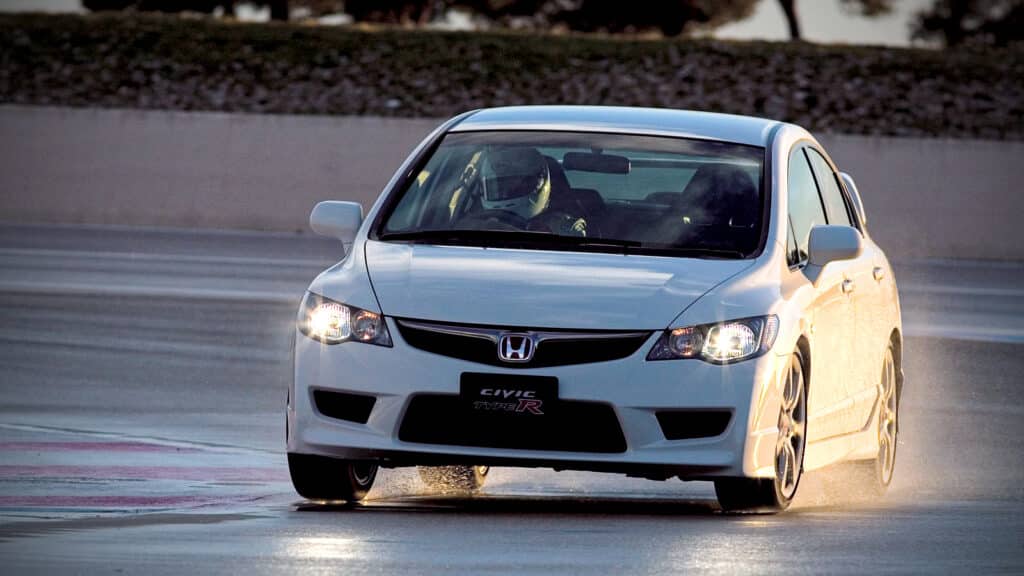
All of these components working together means that the FD2 Civic Type R is a truly incredible machine when you take it out on the road. The JDM-only Civic is practically a forbidden fruit that we missed out on.
North America didn’t even get the Civic Type R in any form until the FK8, and of course, the rest of the world settled with the hatchback FN2 Civic Type R, with its Torsion rear suspension and non-existent horsepower advantage over the EP3.
Speaking of rear suspension, the FD2 also has a very planted rear end. This means that snap oversteer is non-existent, but it also means you have a far better idea of where the rear of the car is, and there are endless amounts of grip with little to no understeer.

It’s very befuddling as to why Honda didn’t treat the rest of the world with the FD2 Civic Type R, or indeed, why they didn’t make a limited edition of the FN2 that included all of the hardware and improvements that the FD2 offered.
The steering is also very direct, which further adds to the car’s already excellent handling prowess. Once again, however, the lack of power is somewhat noticeable, depending on which area of the powerband you’re in.
Also, the super firm suspension means that your back might need a break if the road surface you’re on isn’t smooth, racetrack-grade tarmac.
If you drive the FD2 Civic Type R the way Honda intended, and on the surfaces that Honda tuned it for, there are very few things quite like it.
Not only does it outperform its global counterpart, but it also beats some of the best FWD performance cars of its day, without even breaking a sweat.

It was one of the few FWD cars of the late 2000s with a 0-60 time that dipped below 6.5 seconds. It was also among the few to push the envelope of how much power FWD cars could handle before that old party breaker torque steer came into the equation.
A lot of other FWD cars of its day stuck to closer around 200 hp, with very few going above that.
Even the FN2 Type R stuck with about 201 hp, but the FD2 Type R pushed that, as the Civic Type R continues to do to this day with its 300+ hp output.
Equipment

So, what about mod cons on the FD2 Civic Type R? There wasn’t a whole lot. While every car came with two-tone suede cloth seats and red carpets, creature comforts weren’t exactly abundant.
In true old-school Type R fashion, air conditioning was an option, and Honda also plugged up the area on the dash where the standard stereo system would be.

You could install a single or double DIN stereo, but from the factory, a stereo was not standard.
In that tired old saying about performance cars with no sound systems, the K20A was supposed to be your stereo. However, The interior was suitably different from the regular Civic sedan.

This was made possible thanks to the abundance of red all over the place, including in the center of the seats, a Type R tradition that Honda still follows closely, on the steering wheel badge, the carpets, and the gauge cluster.
Speaking of the gauge cluster, the FD2 Civic Type R uses the regular car’s 2-story instrument cluster, with the analog tachometer on the lower level directly behind the steering wheel, and the digital speedometer on the upper layer closer to the windshield.

This setup isn’t as convoluted as you may think, and it especially makes sense in the Type R. While you’re on the racetrack, the speed doesn’t matter. The revs and shifting at the optimal RPM are what matter most of all.

Like the upper instrument cluster, the tachometer replaces the blue accent lighting with red, and of course, it goes all the way up to 9000 rpm, with the redline being at the aforementioned 8600 rpm.
The engine starter button is off to the right side, and that’s about it.
The MUGEN RR Kit

As if the Type R itself wasn’t sought after enough already, there’s only one item that’s even more sought after, and that’s the MUGEN RR kit.
The MUGEN RR tacked on over $10,000 to the price of the regular Type R. For that price, you got an additional 15 hp, a new cam setup, a freer flowing exhaust, and a new intake, bringing the total output to 237 hp.

Aesthetic upgrades included a giant carbon fiber wing, carbon fiber bumpers, and forged alloy wheels. Furthermore, the RR kit also added MUGEN shocks and a Brembo big brake kit.
To round off the upgrades, the interior also received a pair of carbon fiber bucket seats from Recaro.

This is peak FD2R, and it’s the one that most enthusiasts are after. Only 300 of them were ever made, and while some have trickled into markets outside Japan, they’re still very, very expensive.
Modification and Tunability
While the FD2 Type R has plenty of power from the factory, just by its very nature of being a Honda, it’s an excellent blank canvas for mods of just about any kind.
The K20A has some of the best aftermarket support of any engine, so it should be very easy.

There are a few things you can do, like installing a freer-flowing aftermarket exhaust, a reflash, or maybe a new intake.
These will squeeze out some extra power without you having to go full banana with a turbo upgrade, which does have the potential of messing with the car’s rev-happy character.
The K20A is incredibly tunable, so you should have no trouble squeezing some pretty high numbers out of it. There is a reason why you might not want to do that, which we’ll get to in a moment.

It’s a well-known fact that the FD2R is a very impressive car when it comes to handling, but there’s always a little room for improvement, as is the case with any car.
While the car is prepped from the factory for some truly impressive handling and cornering, a new set of performance tires and a set of Honda Civic coilovers will make it even better.
Tires and coilovers have come a long way since 2007, and considering the FD2R handles great, you can imagine what would happen with some shiny new handling bits.
Buying an FD2 Type R in North America

At this point, you’re probably tempted to splash the cash on a well-kept example of the Japan-only Type R sedan. That, unfortunately, isn’t as easy as you might think.
For starters, if you’re in the United States, the very earliest FD2 Civic Type Rs won’t become legal to import until 2032. However, if you’re based in Canada, good news for you.
As Canadian import laws require a car to be 15 years old, as opposed to 25, the earliest 2007 and some 2008 FD2Rs can be legally imported.
Prices run the gamut, with some pristine examples gracing $50,000, and the MUGEN RR is fast approaching 6 figures. A good condition Type R with lower miles will run you $15,000 to $25,000.
The End of a Legacy

15 years later, the only Civic sedan to wear a Type R badge holds up very well.
It may not have the raw grunt of current Type Rs, but it makes up for it in laser-focused dynamics, and an incredible chassis coupled with a characterful, meticulously engineered powertrain.
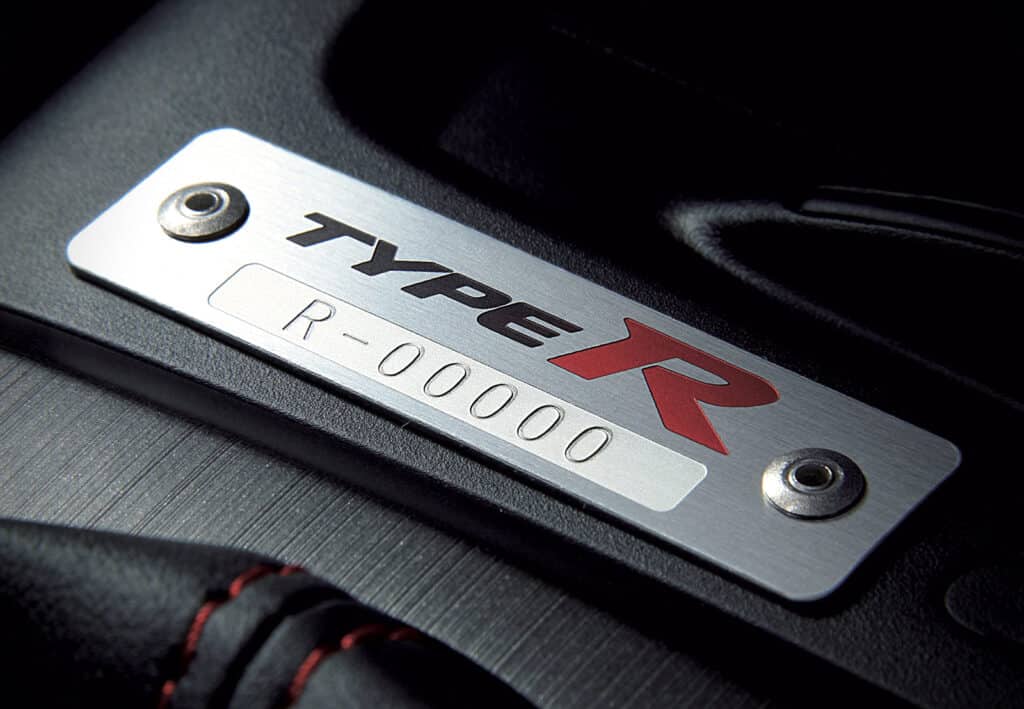
The FD2 Honda Civic Type R is slowly going up in value, and it’s very easy to see why. Have you ever gotten behind the wheel in one of these? Let us know what you think about the FD2R by leaving a comment below!
If you found this article entertaining or useful, share it with a friend! We appreciate your support.

